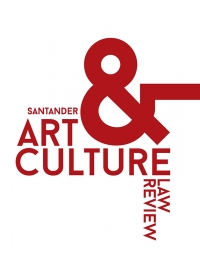Repatriation of Indigenous Peoples’ Cultural Property: Could Alternative Dispute Resolution Be a Solution? Lessons Learned from the G’psgolox Totem Pole and the Maaso Kova Case
Repatriation of Indigenous Peoples’ Cultural Property: Could Alternative Dispute Resolution Be a Solution? Lessons Learned from the G’psgolox Totem Pole and the Maaso Kova Case
Author(s): Karolina Prażmowska-MarcinowskaSubject(s): Law, Constitution, Jurisprudence, Museology & Heritage Studies, Court case
Published by: Wydawnictwo Uniwersytetu Jagiellońskiego
Keywords: Indigenous Peoples; repatriation of cultural property; alternative dispute resolution; Expert Mechanism on the Rights of Indigenous Peoples; totem pole
Summary/Abstract: Considering that the vast majority of the objects constituting Indigenous Peoples’ cultural heritage are now located outside their source communities, the restitution of cultural property has become a pressing issue among Indigenous Peoples worldwide and should be understood as part of Indigenous Peoples’ historical (as well as current) encounter with colonization and its consequences. As such, this article investigates whether international cultural heritage law offers any possibilities for successful repatriation and to what extent the shortcomings of the framework in place could be complemented by alternative dispute resolution (ADR) mechanisms and the new mandate of the Expert Mechanism on the Rights of Indigenous Peoples (Expert Mechanism). First, crucial concepts in the repatriation debates are explained. Next the factual background of the case studies of the G’psgolox Totem Pole and Maaso Kova are presented. This is followed by a discussion of the most pertinent mechanisms of international cultural heritage law and the place of Indigenous Peoples’ rights within such a framework. Subsequently, the concept of ADR is introduced, and the details of the negotiation processes between the Haisla First Nation (Canada) and the Yaqui People (Mexico, the United States) – both with the Museum of Ethnography in Stockholm (Sweden) – are presented. Finally, the article evaluates to what extent ADR could be an appropriate mechanism for the settlement of disputes concerningIndigenous Peoples’ cultural property, andwhether the Expert Mechanism is a well-suited body for facilitating the process of repatriating Indigenous Peoples’ cultural heritage.
Journal: Santander Art and Culture Law Review
- Issue Year: 8/2022
- Issue No: 2
- Page Range: 135-158
- Page Count: 24
- Language: English

